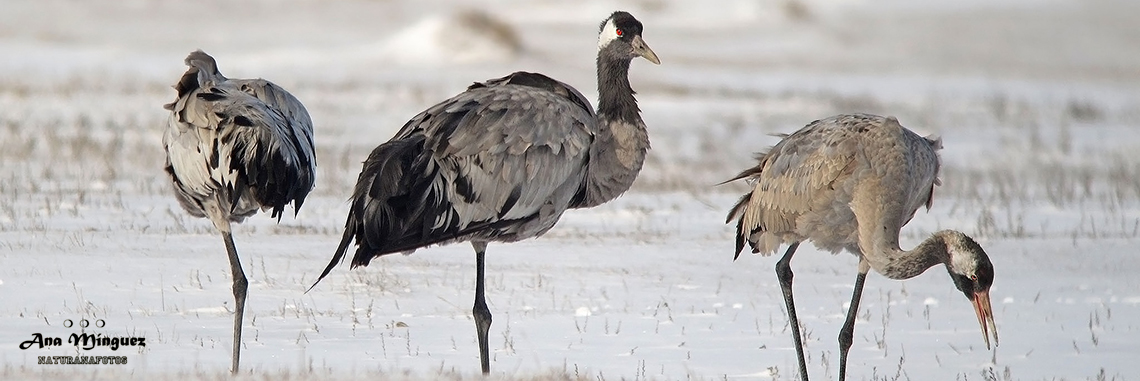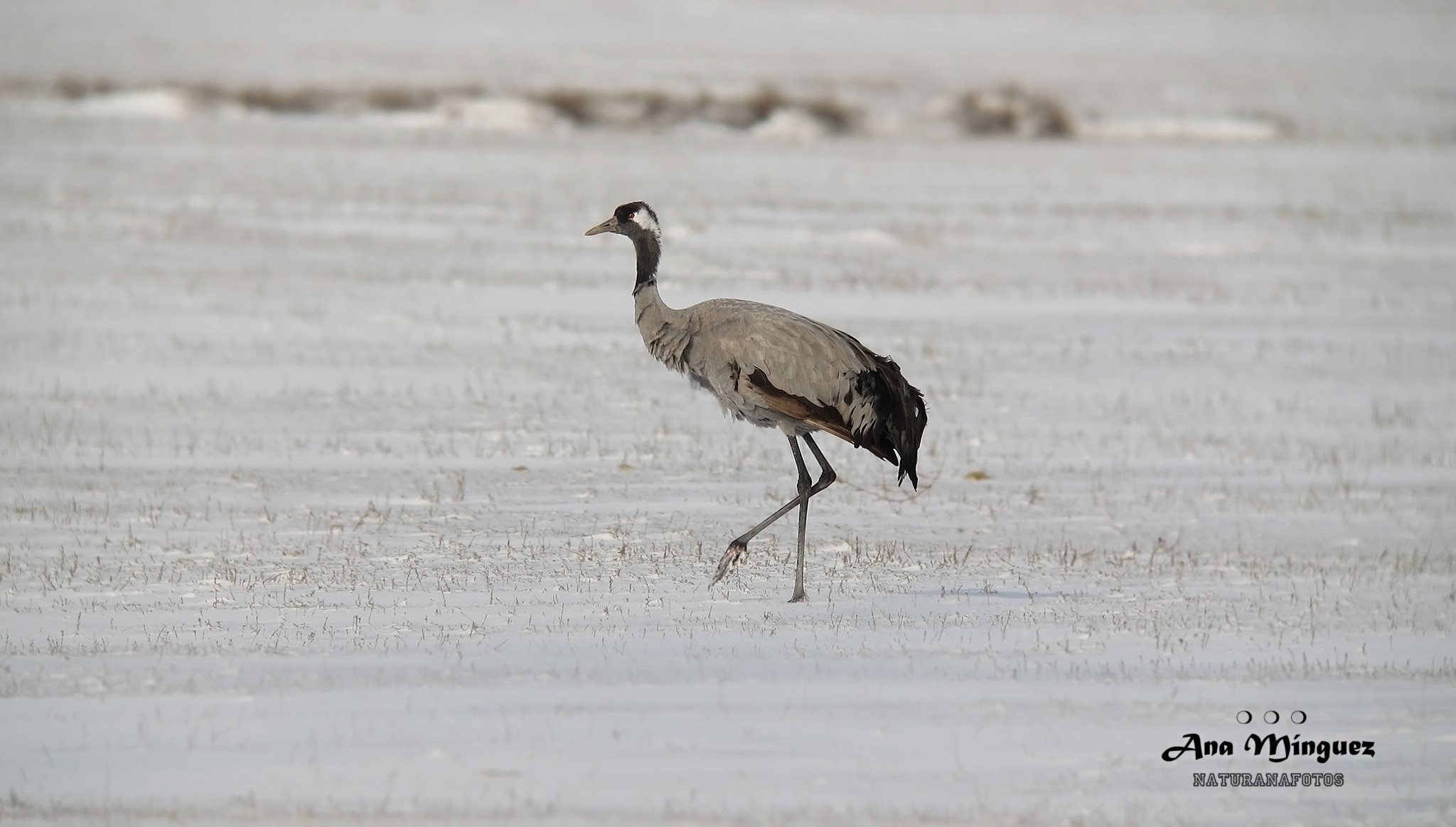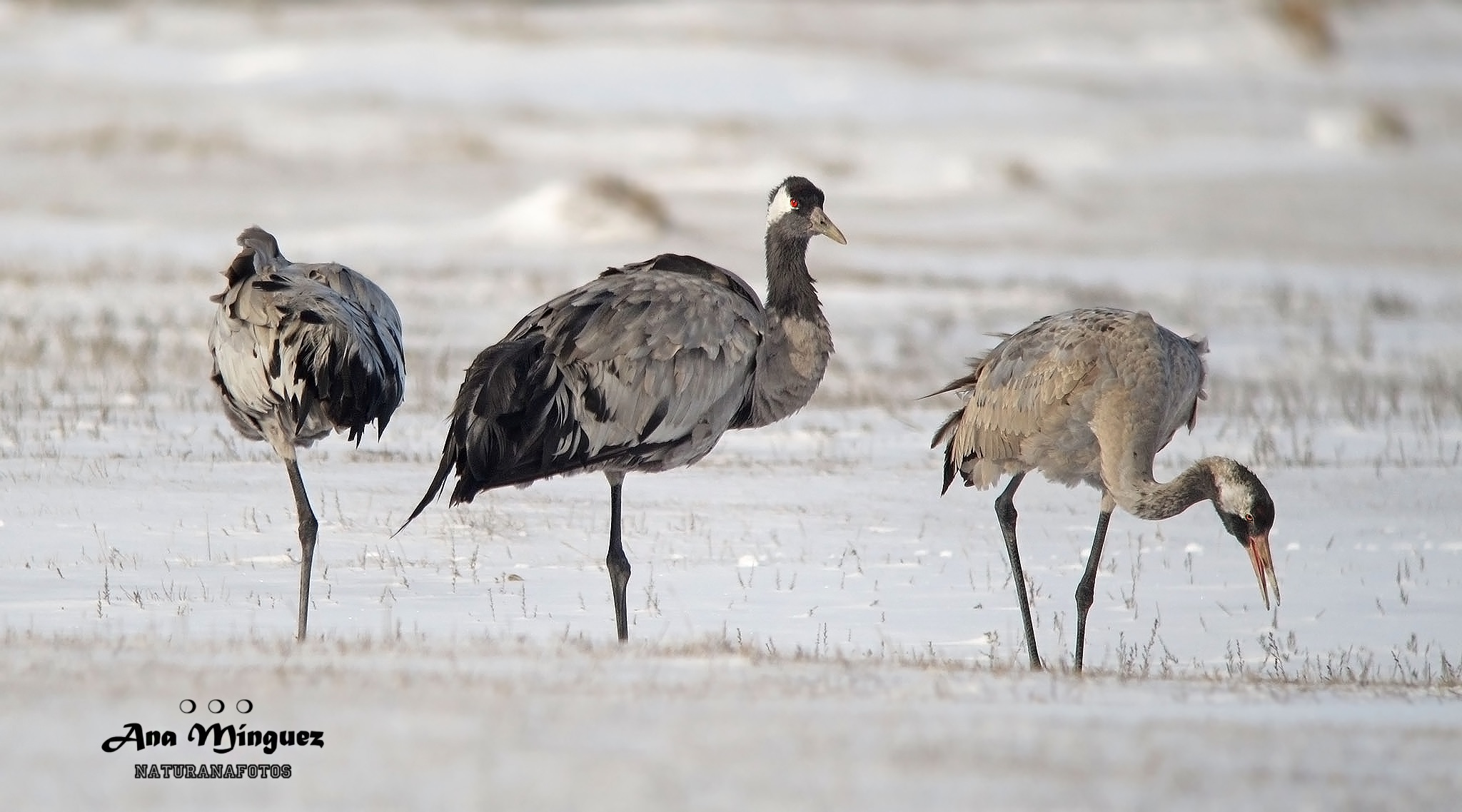Cranes, Great Travellers of the North

By Jose Luis Gallego, environmental communicator (@ecogallego)
While sorting his tools on a cloudy autumn morning, a farmer hears an unmistakable call from outside: grus, grus, grus… He smiles, recognizing the sound without having to leave his shed. “There go the cranes,” he says to himself, “The cold is coming.”
The rattling call of common cranes as they migrate south for the winter is one of the most famous soundtracks of our natural world. The sound is so well-known that it even earned the species its scientific name: Grus grus.

A crane. photographed by: Ana Mínguez (Naturana)
Much larger than herons and storks – their closest kin – these elegant lanky birds can grow to more than a metre and a half in height. Cranes have long legs and necks, a much shorter bill than storks, and their plumage ranges from ash-grey to brownish-grey and black. What is particularly eye-catching is the gorgeous reddish iridescence of their hood and their generously white-spectacled eyes.
The tail isn’t so much a tail, but a ruffled bunch of feathers comprised of long dangling plumes, which give the bird a graceful, elegant appearance.
Essentially vegetarian, cranes usually feed on grains, seeds, roots, and bulbs. That said, when in their breeding grounds in the wetlands of Scandinavia, Russia, and other parts of Eurasia, they also catch amphibians, reptiles, and all kinds of invertebrates. Then comes the cold, sealing the fields in ice and snow.
This is the moment when these enormous, unmistakable birds begin their journey south to their wintering grounds on the Iberian Peninsula. We can spot the first flocks of cranes in mid-October, silhouetted against the sky as they fly in their characteristic triangular formation. Most of the wintering population, however, arrives to our wetlands and meadowlands in November, coinciding with the acorn harvest, when our fields still offer the birds plenty of food to forage.
They will stay here until the onset of spring, always travelling as a flock from their roosts to their feeding areas in and around crop fields and oak groves. Among their favourite places are the lagoons and fields of Castilla y León and Aragón, as well as the meadowlands of Castilla-La Mancha, Andalucía, and Extremadura. The latter is by far their favourite destination and where they winter in the greatest numbers: 80,000 individuals, some years even more.
The crane population that winters in Spain numbers about a quarter of a million individuals. They usually return to their breeding grounds in February, although some depart as late as the first days of spring. By the time the swifts arrive, all cranes will have left our fields.

Crane. Photographed by: Ana Mínguez (Naturana)
This popular avian species is among the most beloved birds among rural residents. In Extremadura, they are so cherished that villages will organize entire welcoming and farewell festivities. In the countries where cranes breed, this affection grows into true devotion.
In Scandinavia, where birdwatching is a popular pastime, nature parks and reserves feature observation decks and specially designed routes to enjoy the cranes’ presence, which attract a great many enthusiasts without disturbing the birds in any way. The celebrated Finnish composer Jan Sibelius, who like many a Scandinavian was a committed birdwatcher, felt a particular passion for cranes.
So much so, he dedicated one of his most exquisite compositions to them: his famous opus 44 “Scene with Cranes”.
Sibelius died in 1957 at Ainhola, his wooden country house on the shores of a lake where cranes came to breed. His family members described how, two days before his death, aware that he was gravely ill, he wrote the following beautiful farewell note: “I believe the cranes came to bid me farewell this morning. They were flying low. Never before have I seen them flying so close to me. One of the birds separated from the flock and flew an arc around the hill towards the house and then circled above it, once, before departing, all the while sounding its sad call, as though wanting to say goodbye.”
